Zhiyun Molus X60 RGB COB Light Review
Dustin Abbott
April 2nd, 2024

It would be easy to dismiss the Zhiyun Molus X60 as being a gimmick because it is so cool looking…but then you realize just how versatile and useful a light it actually is. The Molus X60 is surprisingly bright (enough to use as a fill light for portrait sessions) as a standard bi-color (2700-6500K), but then can also swap into RGB mode to provide splashes of color and mood to photos and videos. It can be powered by a variety of options, including a cool battery grip that makes it look like a vintage camera. That grip has real power, too, rated at at 2550 mAh, 55.08 Wh, which is enough to power the light for 50 minutes at 100% power. There are a variety of configurations beginning at $200 USD and moving up to $399 USD, but is this the monolight for you? Find out my thoughts in my review here:
Follow Me @ YouTube | Patreon | Instagram | Facebook | DA Merchandise | Flickr | 500px | X
Thanks to Zhiyum for sending me a review sample of the Molus X60. As always, this is a completely independent review.
The Molus X60 leads the pack on “cool factor”. I had a number of people ask me if it was some kind of retro camera, as when the reflector and battery grip is attached it does have a very unique profile.

__________________________________________________________________________________________________
Specs
- Output: 2010 Lux at 3.3′ (6500K, without reflector).
- 2700-6500K CCT; Full RGB Color Control
- AC or Battery Power
- Onboard & App Control
- CRI 95 | TLCI 98
- Active Cooling, Ultracompact Design
- ZY Mount, Optional Bowens Adapter
- Includes Mini Reflector & Diffusion Dome
- Includes Power Adapter & Bag
- Battery grip rated at 2550 mAh, 55.08 Wh (50 minutes at 100%)
- 0.7 lb / 319g (Fixture) or 1.5 lb / 689g (Fixture with Battery)
- COB (Chip on Board) = greater efficiency
I really liked a lot about the SmallRig RC-60B in my recent review of it, but there were a few key areas where I was critical. One was the fact that power output dropped during my output test, meaning that full power was available for far less than the rated 45 minutes (full power was only available for 32 minutes in my tests), and then, secondly, I found the usefulness of the light limited somewhat by the lack of Bluetooth control, meaning that however you had the light positioned, you would need access to turn it on/off or make adjustments. Neither of those things are an issue on the Molus X60, however, as I found that it ran at a constant rate during my power tests and also has an easy to use Bluetooth app for remote control.
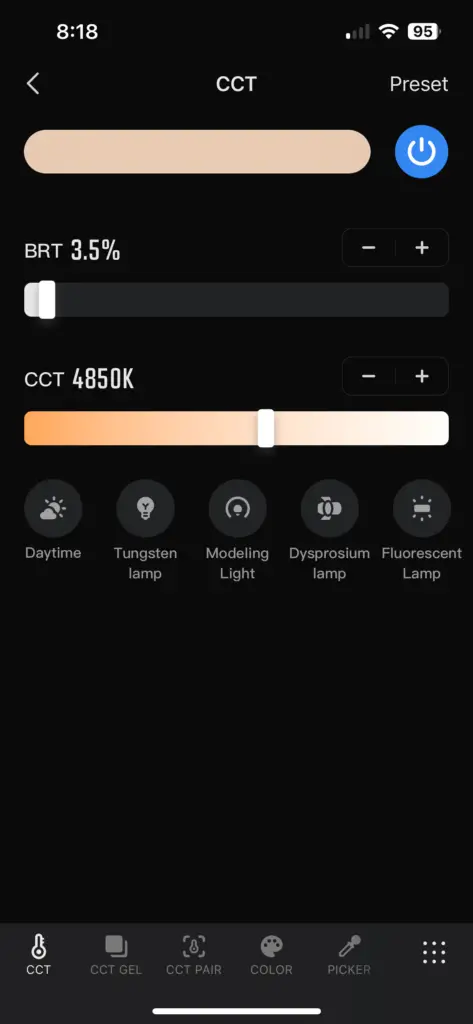
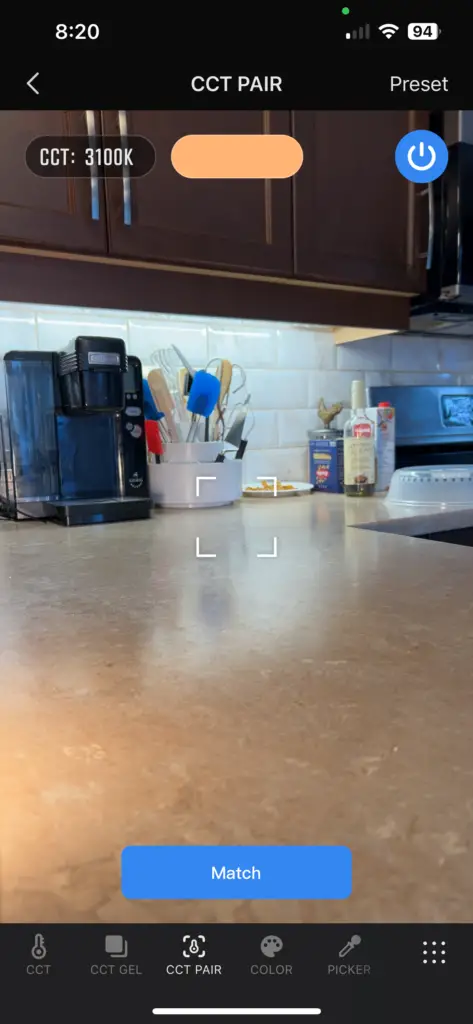

So how did things hold up in my tests?
Tests
- Lux Value
- Battery Life
- Portrait light
- Video Light
- Effects
Results from Lux Value tests.
I like to use a Lux meter and test the output from these lights to see if things hold up to the manufacturers claim. The claim for the Molus X60 is right over 2000 Lux at 1 meter distance. I used a measuring tape to set the distance and took several readings at both 1 meter and then at 3 meters (a more practical distance if you are lighting a set, for example). The results?
- Bare Light output at 100%, 6500K, @ 1 Meter = 1873 Lux
- Bare Light output at 100%, 6500K, @ 3 Meter = 759 Lux

Now my test is surely not as scientific as the testing standards from the manufacturer, but the fact that I was within 5% of the stated output is enough to verify that their claims are roughly accurate.
The Molus X60 does come with a mini reflector that significantly amplifies the output. With the reflector in place I got the following values:
- With Reflector output at 100%, 6500K, @ 1 Meter = 12,000 Lux average
- With Reflector output at 100%, 6500K, @ 3 Meter = 1788 Lux
Moving to a warmer color will reduce the output somewhat. I did a couple of tests with the lux meter just a few inches in front of the reflector, and got a max output at that close distance of 393,960 lux at 6500K. Moving to the warmest setting (2700K) reduced the output to 308,830 lux, which is still very bright, obviously, but significantly less. Moving to RGB mode will further reduce output, obviously, as emphasizing a single color reduces output. Zhiyun cites the output at various colors at roughly one third of the peak output of the light (brightest is right under 700 lux at one meter, without reflector). Many times that’s okay, however, as you don’t want to bathe whole scene in that light, like here:
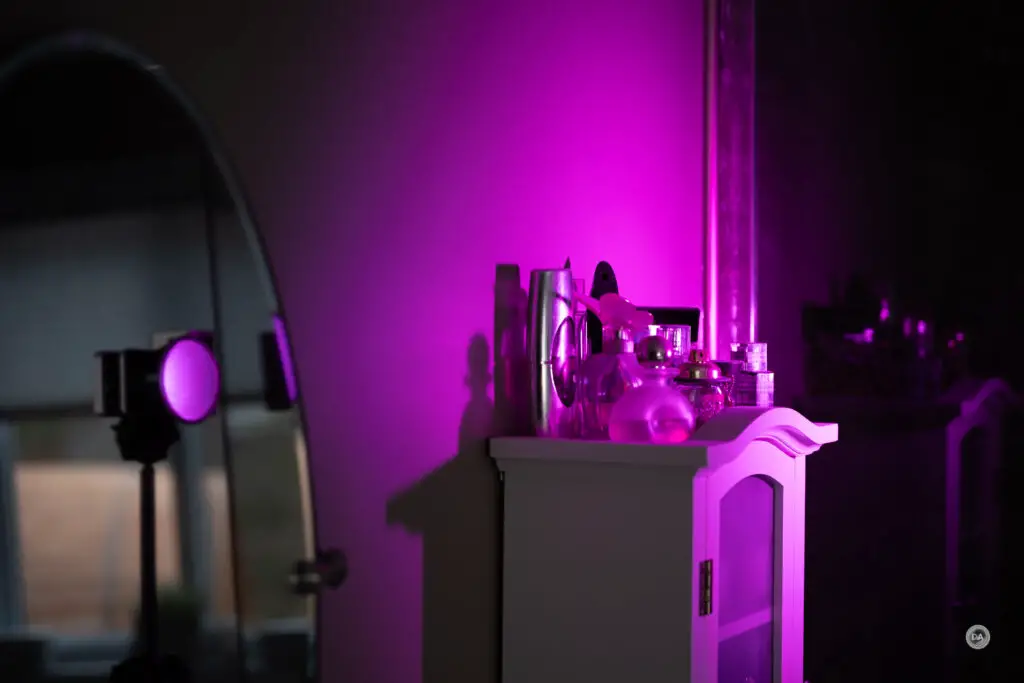
…but instead provide some accent lighting with it, as I’ve done in this video to add a little splash of orange to my set background.
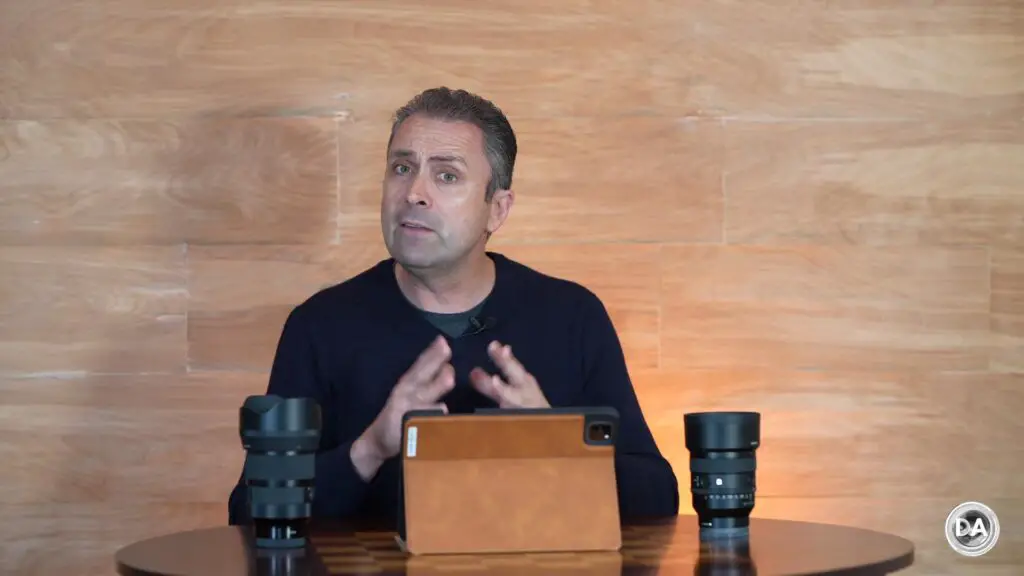
Also included in a small silicon diffuser that slips over the reflector. It will soften the light and make it more flattering, though at the cost of nearly halving the output. I tested the lux value at 207,110 under the same conditions.

On the practical side of things, I found the amount of light output from Molus X60 sufficient to doing fill light for environmental portraiture. I could throw the very compact light into my camera bag and then just mount it on the top of the my portable tripod even when working alone. The light was plenty sufficient for allowing me to balance the ratios between a dim foreground and a bright background, like in this shot:

I also found that I am mostly working at far less than 100% output if using the light for my lighting my YouTube videos. There’s a surprising amount of output from this little light due to the COB (chip on board) design.
Results from Battery Life Tests:
There is obviously a wide variety of ways to power the Zhiyun Molus X60, including the battery grip, AC adapters, V-mount batteries, and even standard power banks. I tested a couple of different options to evaluate runtime.
First with the standard grip, which is very cleverly designed so that it easily clips into place and then releases via a release button on the face of the light. I ran the light at 100% and started with a full battery. The light shut off after 52 minutes, which slightly exceeded the rating of 50 minutes provided by the manufacturer. I noticed no light dropoff during that time and also noted that though I did the test in my office while working on my computer nearby, I heard very little sound from the cooling fans. When I handled the light at the end of the test, however, I noted how cool everything was. The chassis not only looks cool but also cools efficently.

My one critique of the battery grip is that it utilizes four indicator lights for state of charge rather than a more precise digital readout showing a percentage. That would have been useful.
On a positive note, I have felt that the battery grip recharges reasonably fast. It only seems to draw at 30 watts, but doesn’t slow down as much nearing peak capacity as some batteries. I always want to return to a 100% state of charge so that I have as much runtime as possible for my next use, and I found that I was happy with the charging rate.
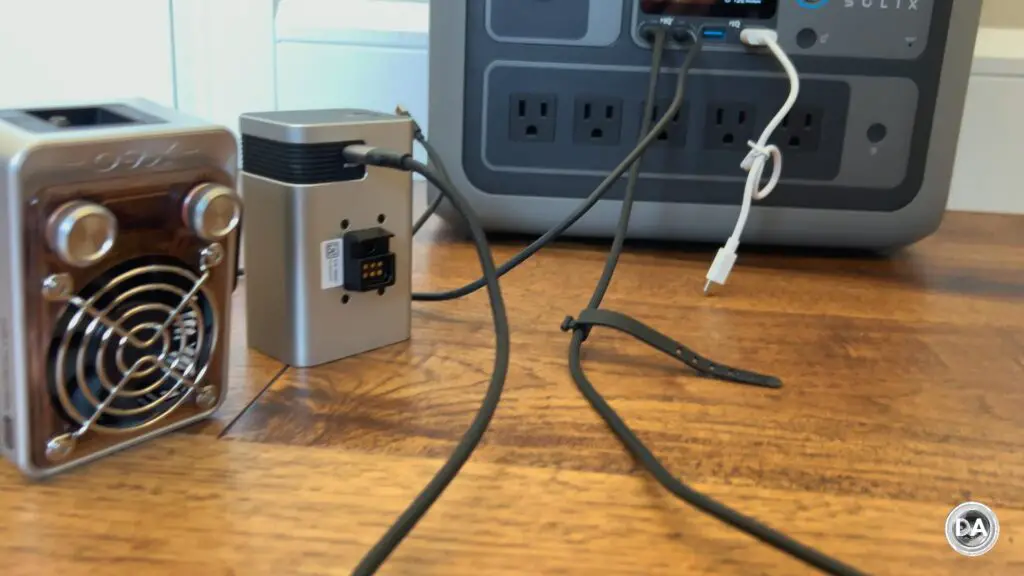
I also tested the light powering it from a 99Wh V-mount battery. I got about 80 minutes off the V-mount battery running the light at 100% power output. With the battery grip and a V-mount battery you could get an easy 2 1/2 hours run time if you dropped output even to 90%.
Portrait Light Test
I’ve always been a fan of fixed lighting for portraiture, as it is makes it very easy (obvious) to see the modeling of the light and also makes focus in a dim space easier than with a strobe. The compact size of the R60 makes it very easy to throw into my camera bag even with the reflector attaches, and that has allowed me to use it in a variety of portrait settings. In this shot I used the low evening sun as the accent light to the left of the model while using the X60 as my main fill light. The two light sources blended together very nicely for this lovely portrait.

In this shot I used the light as the primary light source in a shadowed area between trees. I went for a lower key look that I think works nicely here.

The compact size means that I can throw it onto a lightweight tripod and position it in a place where it will be hidden from camera.
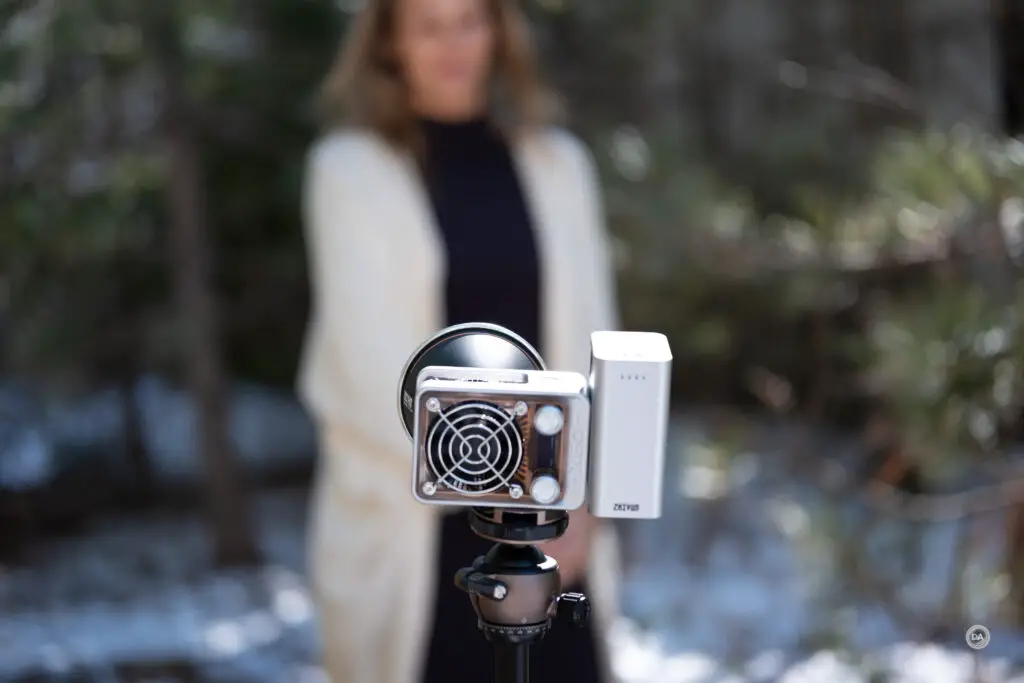
I used it to offset very harsh, dappled lighting for this shot, and you can see that the inclusion of the light allowed me to keep my subject more in the natural shadow but get enough light on her that the background isn’t blown out and harsh.

Fixed lights like this are great if you want to do a mix of photo and video, as the lighting will be the same for both unlike strobes. The constant modeling of the light also makes using fixed lights like this more accessible for new photographers than using strobes.
A CRI rating of 97+ means good color accuracy, obviously important for portrait work. I found the Molux X60 a nice tool for portrait work, though the quantity of light is going to work best with a single person or a couple as opposed to a group unless you have multiple lights going. It can’t match a strobe for pure output.
Video Light Test
There isn’t much challenge here, as the primary purposes of a video light are to provide sufficient output, to be consistent enough to avoid any kind of strobing effect, and preferably to have good options for controlling the light output. If you want to get serious about modifying the light, you’ll probably want to invest in some of the other accessories…or just buy the Bowens adapter from Zhiyun that will allow you to then utilize a wide variety of Bowens mount modifiers. Zhiyun notes that the X60 can utilize all of the same accessories as their popular X100 light.
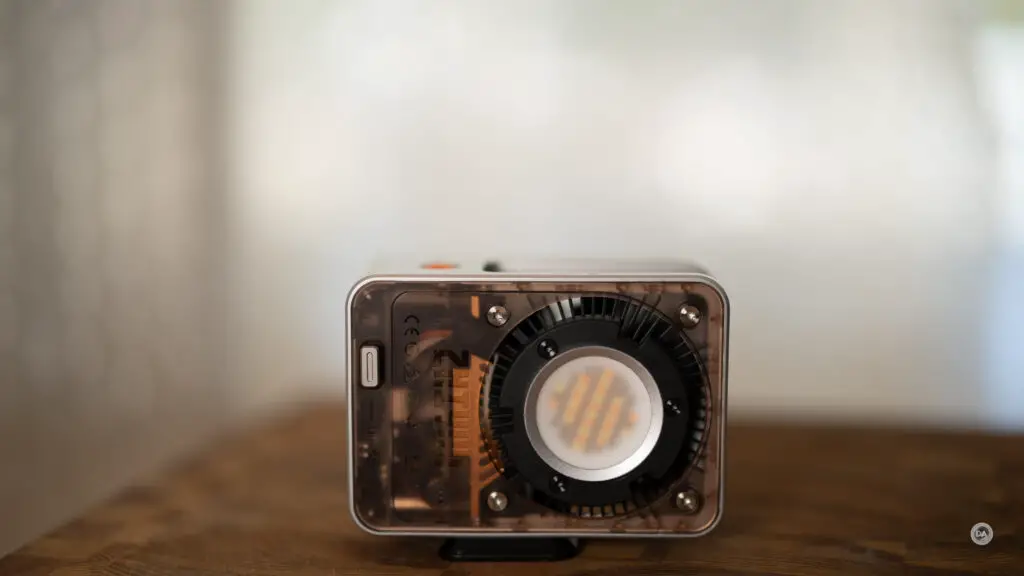
I found the light output and quality sufficient for my video work when lighting the set for some of my YouTube episodes utilizing the reflector, and if I needed less light, the included dome diffuser. I really appreciate the ability to remotely control the light via the app.
Effects Test
It has become standard for any lights like these to have various lighting effects, and while I often find these quite gimmicky, I will note that the Molus X60 is more versatile than most in this area because of its RGB abilities. Most of the time these type lights only have the ability to change color temperature in a limited range and then intensity, but an RGB light like this can produce intensely different colors. That makes the effects more intense.
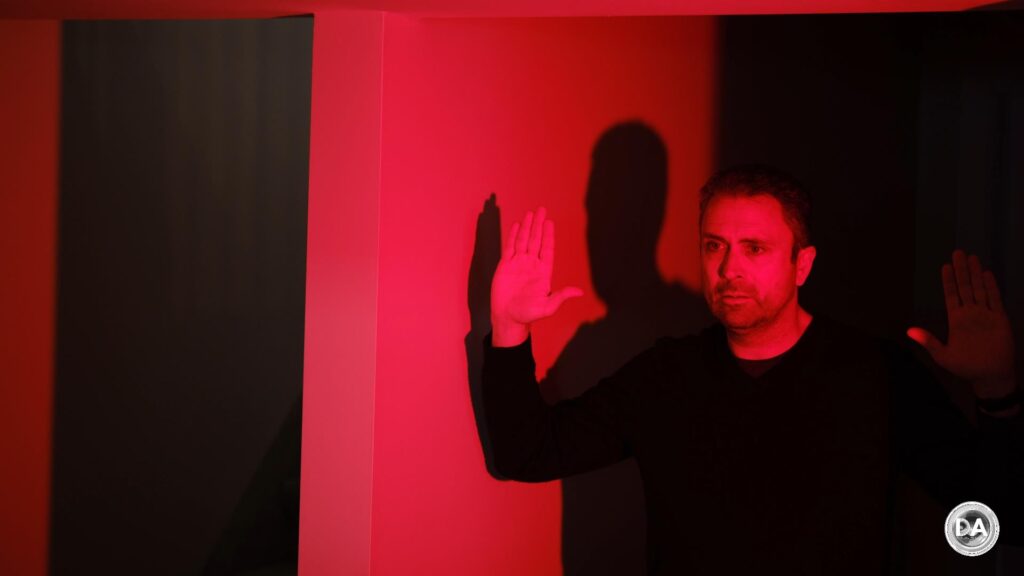
As such, the RGB version of the light has six more EFX than the standard bicolor version, and those additional effects in many ways are the most effective due to the use of color.
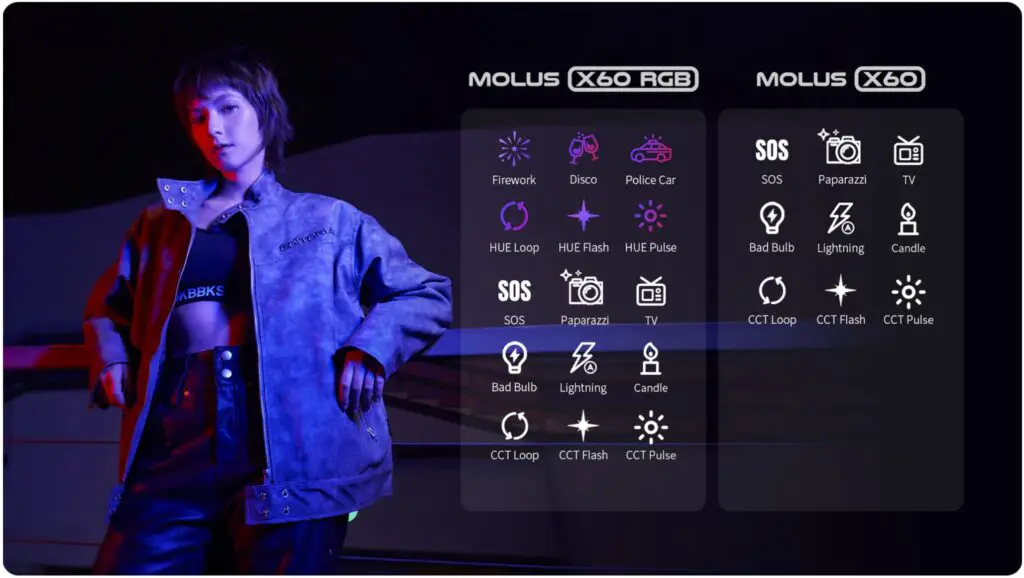
Perhaps more gimmicky is the inclusion of a music mode where the light reacts to the pulse of music and adds pops of color, though I found the music needed to be fairly loud for this to work effectively. It could be interesting if your thing is shooting music videos, though.
Things I Like
- Portability – can be easily packed in to bag
- Looks very retro cool
- Flexibility – 4x different power options
- Battery grip integration well executed
- Carrying case
- Battery grip life long enough to be useful
- Nice amount of light
- Can be used with Bowens mount accessories via adapter
- Runs quiet and cool
- RGB capabilities expand versatility
- Bluetooth control
- AC Adapter included
Things I Don’t Like
- Battery grip has only four indicator lights rather than percentage
- Bowens mount accessories will have to be via adapter
- More expensive than SmallRig RC-60B even for the bi-color version
Conclusion
I’m loving this new generation of COB lights with built-in power options. The Zhiyun Molus X60 doesn’t take up much more room in my bag than a V-mount battery and yet provides a great solution for location lighting, working well for both video and stills.
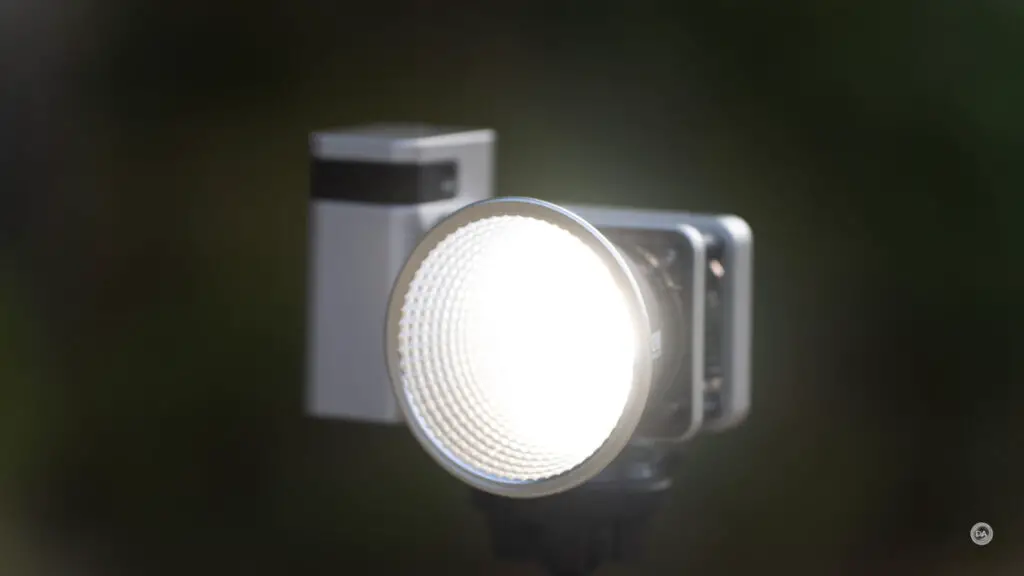
The X60 can put out a very usable amount of light for many situations. You’ll need multiple lights if you intend to light a full set, but for solo work it is plenty even when used at medium distances. I’ve actually really enjoyed using it as an easy lighting tool for portrait work.

The X60 solves a few of my very short list of complaints against the RC-60B, namely the lack of Bluetooth app control and the fact that the battery life runtime was mitigated by the power output stepping down as the battery life depleted.
You will pay a bit more for the Molux X60, but for some people it will be worth it. Packages range from $199-$399, depending on how much want in your kit. The most expensive “Pro” kit comes with two of the battery grips and a softbox, which is actually a really strong value when you break down the pricing of those items individually. I’ve reviewed the “combo” package, which includes one battery grip but no softbox, and, to me, isn’t nearly as compelling a value at $329. That extra $70 for the Pro package gives you more bang for the buck, which is the reason why it is the top seller. The nice thing here is that if you already have a good power bank that has a PD rating of at least 60 watts, you can go with the cheapest option and still get an amazing, stylish light. I really like the way the battery grip works together with the light here, though, and it gets you away from any cords, which is always pretty sweet.
Bottom line: this is a very stylish, very flexible, and surprisingly useful compact light that puts out a surprising amount of light. I’m loving it.
_________________________________________________________________________
GEAR USED:
Purchase the Zhiyun Molux X60 @ Zhiyun (use code “10ZYX60TOCXX” at Zhiyun or Amazon for 10% off) | B&H Photo | Amazon | Amazon Canada | Amazon UK | Amazon Germany
_________________________________________________________________
Want to support this channel? Use these affiliate links to shop at: B&H Photo | Amazon | Adorama | Camera Canada | Amazon Canada | Amazon UK | Ebay | Make a donation via Paypal
Buy DA Merchandise https://bit.ly/TWIMerch
Keywords: Zhiyun, Molus, X60, RGB, Molus X60 Review, COB, RC-60B, LED, Video, 60W, Battery Grip, Softbox, VB-99, V-Mount, Video Light, Portrait, Review, Studio, Image Quality, Sample Images, Video, Photography, let the light in, weathersealing, #letthelightin, DA, #zhiyun, #molusx60, #videolighting
DISCLAIMER: This article and description contains affiliate links, which means that if you click on one of the product links, I’ll receive a small commission. As an Amazon Associate I earn from qualifying purchases.










 Viltrox Pro AF 85mm F1.4 FE Gallery
Viltrox Pro AF 85mm F1.4 FE Gallery  Viltrox AF 85mm F1.4 PRO FE Review
Viltrox AF 85mm F1.4 PRO FE Review  Yongnuo YN 35mm F1.8 ART Gallery
Yongnuo YN 35mm F1.8 ART Gallery  Yongnuo YN 35mm F1.8 DA ART Review
Yongnuo YN 35mm F1.8 DA ART Review 


